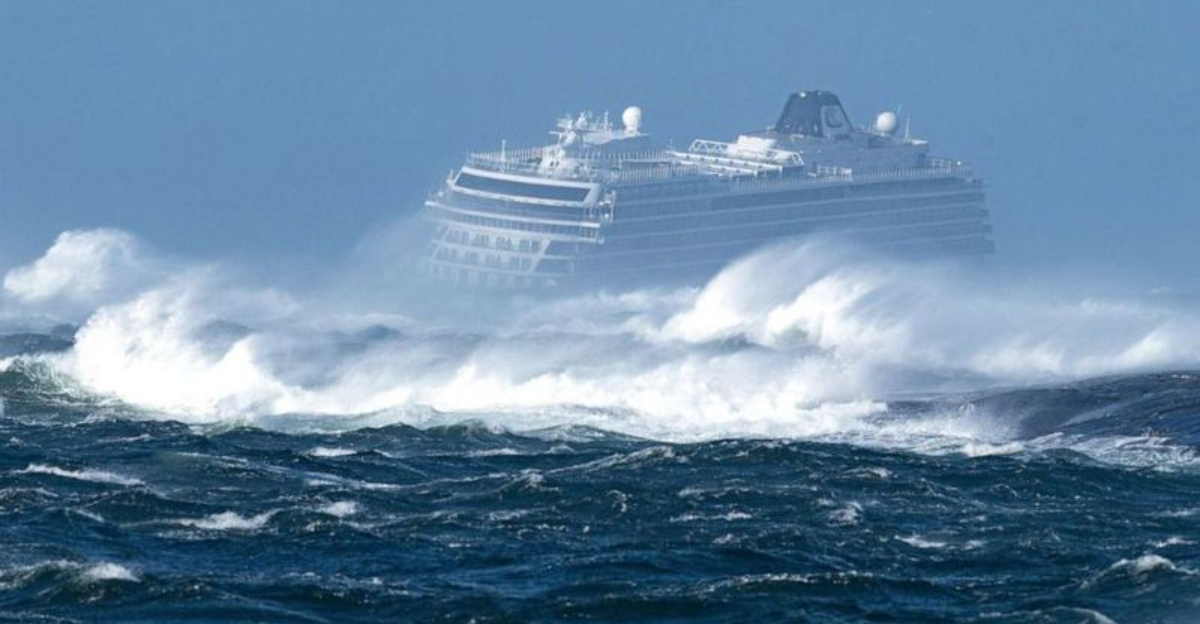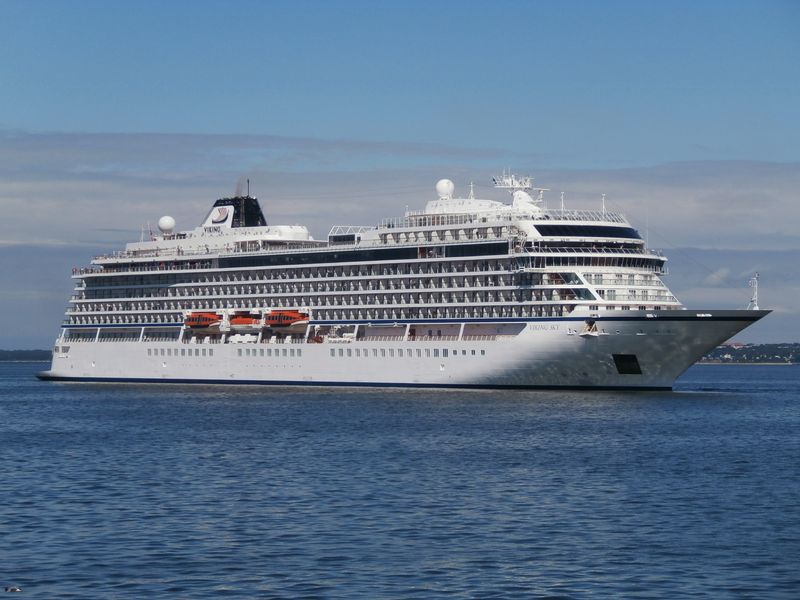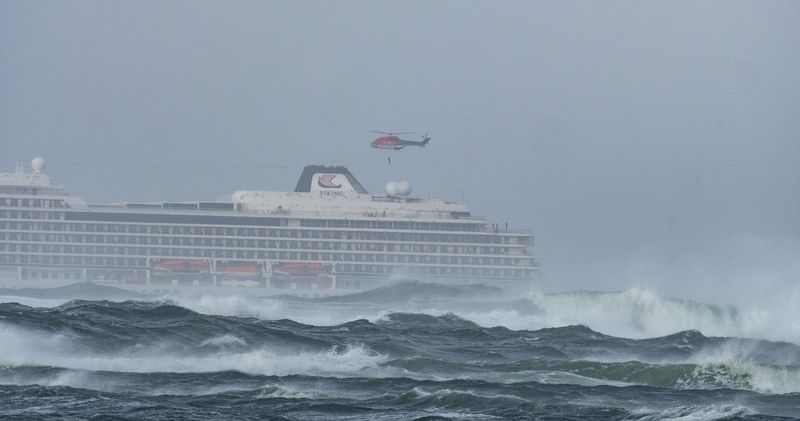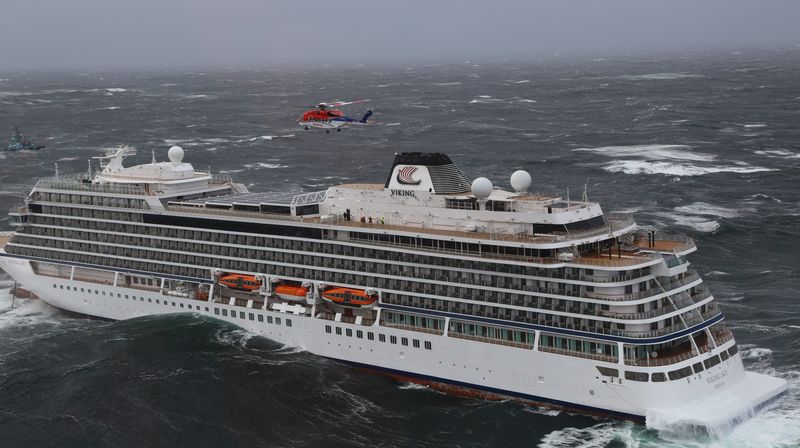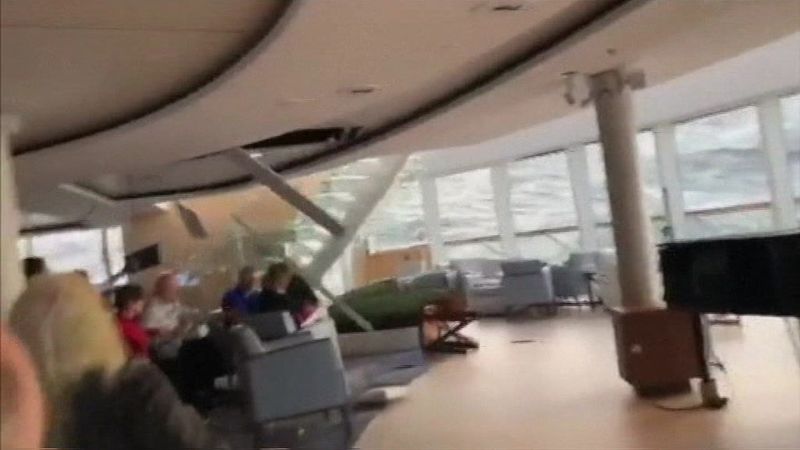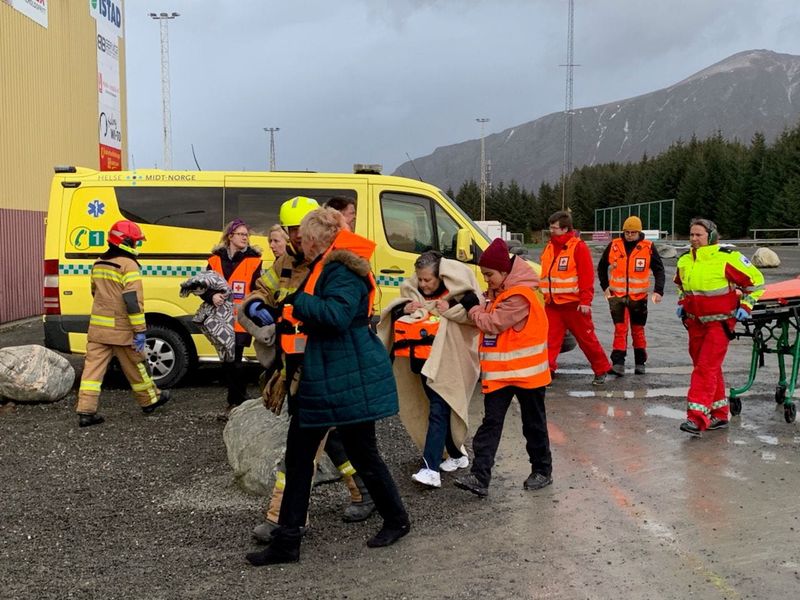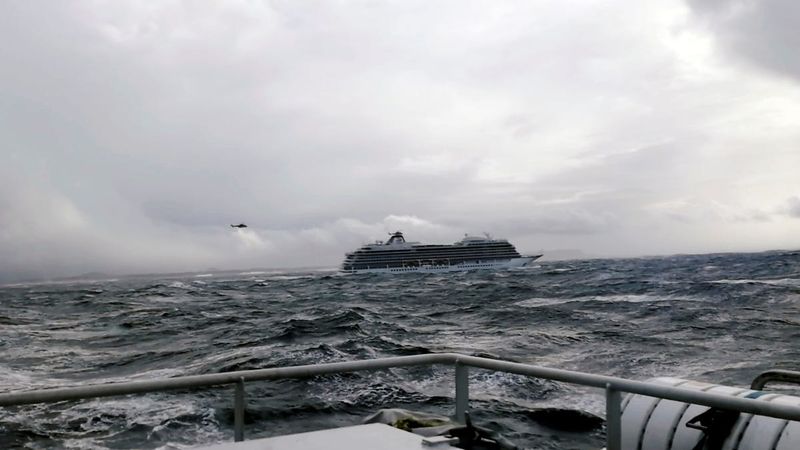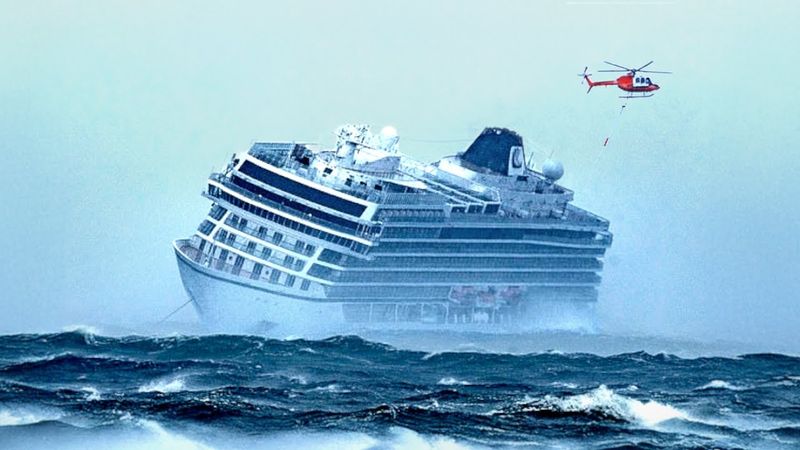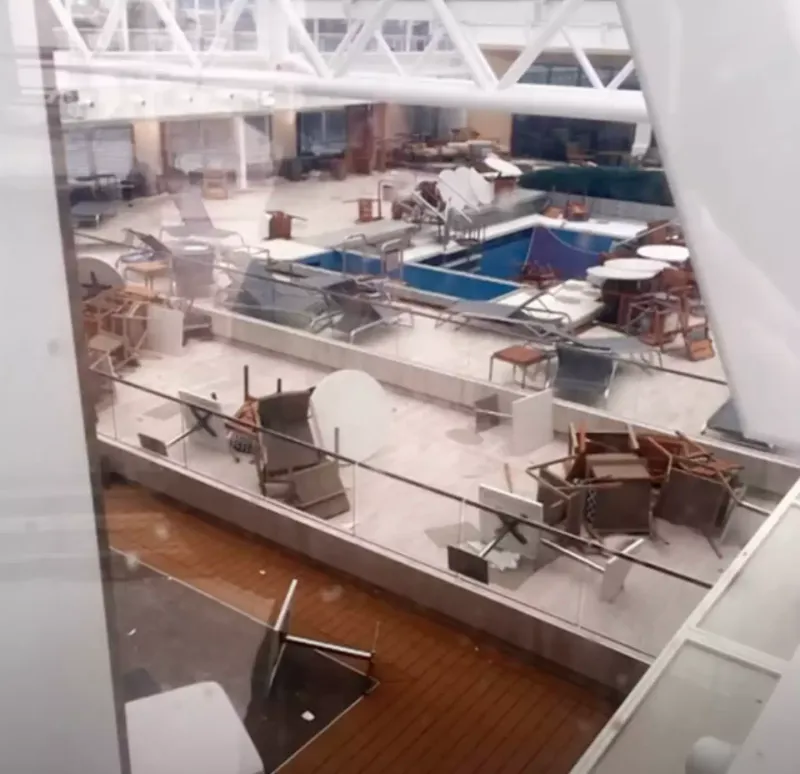When the Viking Sky cruise ship set sail with over 1,300 people aboard in March 2019, no one could have predicted it would soon be teetering on the edge of catastrophe. Battling a ferocious storm off the coast of Norway, the luxury liner came within a whisker of repeating history’s most infamous maritime disaster: the sinking of the Titanic. Here are 14 chilling moments that show just how close the Viking Sky came to a deadly fate.
1. All Four Engines Failed—At Once
At the height of a brutal North Sea storm, all four engines of the Viking Sky suddenly failed, leaving the massive ship powerless and drifting toward the rocky Norwegian coast. It was an eerily Titanic-like twist of fate—complete mechanical failure in the face of unforgiving nature.
The ship’s crew frantically worked to restart the engines while passengers were instructed to prepare for evacuation. Despite their efforts, the engines remained silent amidst the howling winds.
The terrifying possibility of crashing onto the jagged coastline loomed large, reminiscent of Titanic’s tragic end, sparking fear and uncertainty.
2. Just 100 Meters from Disaster
With no propulsion and 30-foot waves pounding the vessel, the ship drifted dangerously close—just 100 meters—from grounding on jagged rocks. A few more minutes of delay, and this story could have ended in tragedy.
Crew members were on high alert as they monitored the ship’s precarious position. Passengers clung to their seats, aware of the impending danger.
The tension was palpable as the ship hovered on the brink of catastrophe. Miraculously, a combination of luck and the crew’s determined efforts averted disaster at the very last moment.
3. The Mayday Call Heard Around the World
The captain issued a chilling Mayday call as the situation spiraled out of control. Norwegian rescue services immediately launched a large-scale emergency operation, fearing a repeat of Titanic-style loss of life.
The urgency in the captain’s voice underscored the gravity of the predicament. As the call went out, rescue teams prepared for a massive evacuation effort.
Across the world, news of the Viking Sky’s plight spread rapidly. The maritime community and the public held their breath, waiting for updates on the unfolding drama.
4. Helicopter Rescues in Hurricane-Like Winds
As the ship rolled and pitched in terrifying waves, helicopters performed perilous winch rescues. Passengers were airlifted one by one in a scene straight out of a disaster film. Over 400 people were evacuated this way—while the storm raged on.
The skill and bravery of the rescue pilots were put to the ultimate test. Each lift was fraught with danger as wind gusts threatened to derail operations.
Amidst the chaos, the stoic determination of the crew and pilots shone through, ensuring the safety of hundreds of passengers.
5. Furniture and Glass Went Flying
Inside the ship, passengers clung to railings as furniture, glass, and even grand pianos flew across rooms. The violent motion and chaos resembled the Titanic’s final moments, minus the sinking.
Each lurch of the ship sent unsecured items crashing into walls and passengers. The scene was one of pandemonium, with cries and gasps echoing through the corridors.
The eerie similarity to the Titanic’s chaotic interiors added to the fear, as passengers struggled to stay safe amidst the turmoil.
6. A Crew’s Moment of Heroism
Despite the danger, crew members risked their lives to assist frightened passengers, distribute life vests, and calm the chaos. Their quick thinking prevented panic and may have saved countless lives.
In the face of overwhelming odds, the crew displayed unwavering dedication. They moved swiftly through the ship, offering assistance and reassurance.
Their bravery and presence of mind provided a beacon of hope amidst the storm’s fury, leaving a lasting impact on those they helped.
7. Aged Passengers in Peril
Many passengers were elderly, making evacuation even more difficult. Several sustained injuries, including broken bones. Some likened the experience to “a living nightmare at sea.”
The vulnerability of these passengers added an additional layer of urgency to the rescue efforts. Crew members provided extra care, ensuring their safety.
Despite the challenges, the elderly passengers’ resilience shone through, inspiring those around them to persevere.
8. Missing Safety Drills
Some survivors later reported they hadn’t received proper safety briefings before the emergency, fueling comparisons to the Titanic’s infamous lack of lifeboat drills.
The absence of these vital drills left passengers feeling unprepared and vulnerable. Questions about protocol and preparedness arose in the aftermath.
This oversight underscored the importance of regular safety drills, highlighting lessons that needed to be learned from past disasters.
9. Lifeboats Were Unusable
High seas rendered the lifeboats impossible to launch safely. Just like in 1912, the crew was forced to rely on alternative rescue methods—only this time it was by air, not lifeboat.
The daunting waves crashed against the ship, making any attempt to deploy lifeboats a perilous endeavor. The decision was made to use helicopters instead.
This modern twist on a historic problem showcased the evolution of rescue technology, yet highlighted enduring challenges at sea.
10. Propulsion Failure Still a Mystery
Although engine oil levels were blamed, the full reasons for the sudden failure remain debated. Some maritime experts called it “unacceptable,” especially in treacherous waters known for deadly storms.
Investigations delved into the technical aspects, searching for clues that might explain the malfunction. The mystery continued to puzzle even seasoned professionals.
This enigma raised concerns about maintenance and oversight, prompting calls for stricter regulations and preventive measures.
11. Near-Miss with Grounding in Hustadvika
The ship was in Hustadvika, one of Norway’s most dangerous stretches of sea—shallow, rocky, and infamous for shipwrecks. It’s the worst possible place to lose power, and they nearly didn’t make it out.
Navigating through these treacherous waters was a nerve-wracking endeavor. The crew’s expertise was crucial in averting a catastrophe.
This near-miss highlighted the perils of Hustadvika, reminding sailors of the unpredictable nature of the sea.
12. 20-Hour Ordeal
Passengers endured nearly 20 hours of terror as the ship pitched and rolled while rescue efforts played out in slow, painful real time. Some survivors described it as “the longest day of our lives.”
Every moment was filled with uncertainty and fear, as the relentless storm showed no signs of abating. Resilience and endurance became necessary virtues.
This grueling experience left an indelible mark on all involved, a testament to human spirit in the face of adversity.
13. Media Frenzy Erupts
As footage of the chaos surfaced online—flying furniture, terrified faces, and dramatic helicopter lifts—the world watched in horror. The incident became global news overnight, with comparisons to Titanic flooding headlines.
The media coverage was relentless, capturing every detail of the unfolding drama. Public interest and concern surged.
This media storm underscored the global fascination with maritime disasters, drawing parallels to history’s most infamous tragedies.
14. A Wake-Up Call for the Cruise Industry
The Viking Sky disaster forced a hard look at cruise safety protocols, emergency preparedness, and the wisdom of sailing through known danger zones. Had luck not been on their side, this story would have had a much darker ending.
Industry leaders convened to discuss improvements and safeguards. The urgent need for enhanced safety measures became evident.
This incident served as a pivotal moment for the cruise industry, emphasizing the importance of vigilance and innovation in safety.
